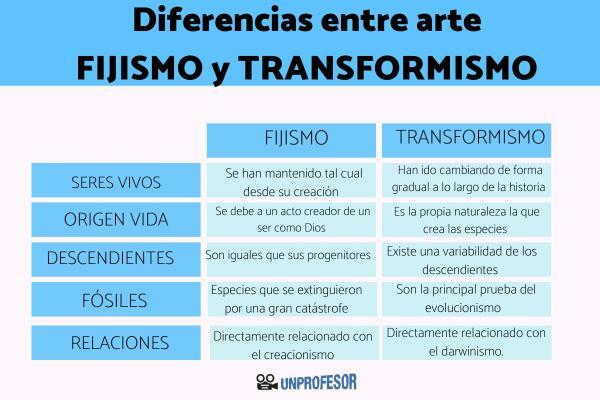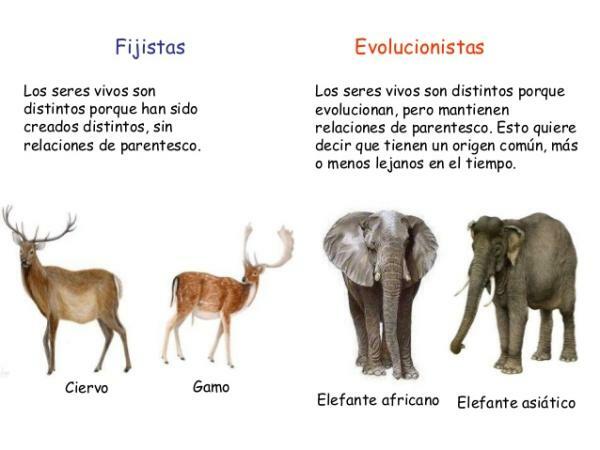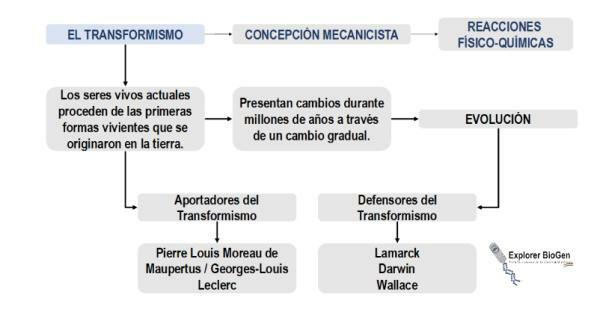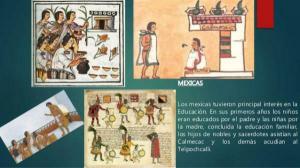6 differences between FIJISM and TRANSFORMISM

In today's class we are going to study one of the most interesting questions in philosophy and biology, the differences between fixism and transformism. The first establishes that living beings have remained as they are since their creation and the second affirms that living beings have changed throughout history.
Both trends have their origin in the philosophy and start from different biological theories whose objective is explain the origin and existence of flora and fauna on earth from different perspectives or postulations.
If you want to know more about these two theories, keep reading this lesson from a PROFESSOR. We explain everything to you!
The fixism It is a current of thought or doctrine that establishes that all life on the planet has been maintained immutable or without any type of evolution to adapt to the changes suffered throughout history on Earth. Namelythe offspring are the same as their parents. For example, a dog is sired by two dogs with physical similarities.
Also, this theory is currently supported by the
fundamentalist religious currents and is very close to creationism. Which, affirms that the origin of each one of the species is behind a creative action like God's.Within fixism, authors such as Carl von Linne (1707-1778), Georges Cuvier (1769-1832) or louis pasteur (1822-1895-evolutionary fixist).
“…There are as many different species as diverse forms were originally created by the infinite being…” Carl von Linne

The transformism is a current of thought or doctrine that establishes that all living beings have evolved or they have undergone a gradual metamorphosis throughout history to adapt to environmental changes. That is, all species have a biological transformation from an ancestral species unique that gives rise to a diversification of species depending on the ecosystem in which they are found or the ways of life.
For example, the wolf is the ancestral species that has given rise to different types of dogs, which, They differ depending on the ecosystem and the use that human beings have given it throughout history (hunting, defense, company…)
Likewise, at present this theory is found in the neodarwinism and is very close to darwinism of Charles Darwin (1809-1882) and Russell Wallace (1823-1913). Which states that the evolution of living beings takes place from the natural selection when resources are scarce and there is a struggle for survival with descendants better adapted to the environment.
“… It is not the strongest species that survives, nor the most intelligent, but the one that responds best to change…” Charles Darwin
Within transformism, authors such as: Anaximander (S.V a. C.), Georges-Louis Leclerc (1707-1778), Erasmus Darwin (1731-1802) and Jean-Baptiste Lamarck (1744-1829) with his work zoological philosophy (1809).
Lamarck stated that differences between species are due to gradual transformation and transmission of certain biological traits from parents to offspring. For example, according to Lamark, the ancestral giraffe had a shorter neck and, over time, it began to try to grab the smallest leaves. tall of the trees, so that the neck was growing from generation to generation to better reach the leaves located higher height.
"... Nothing makes sense if it is not from the evolutionary perspective..."Dobzhansky (1900-1975)

Finally, in a PROFESOR, we briefly explain some of the similarities that occur between these two currents:
- Both currents settle and develop in biological theories about species.
- Both have their origin in different Philosophical currents.
- The aim of both is to explain why some species exist in an ecosystem and not in another.
- Both refer to extinction of some species as a function of survival.
- Both seek to explain how it originated the life of living beings.



